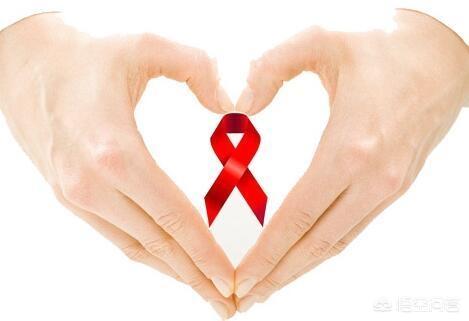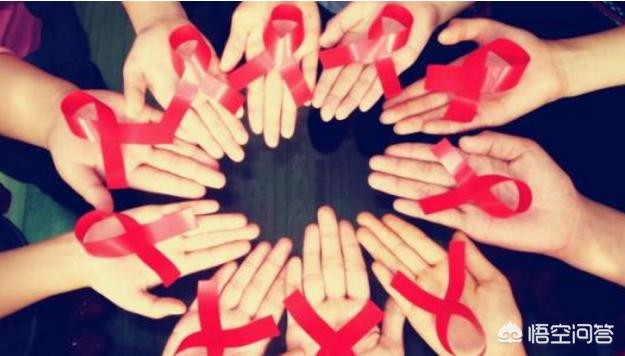Are STDs contagious?

Sexually transmitted diseases (STDs) are traditionally defined as diseases transmitted through the act of sexual intercourse, with the main lesion occurring in the genital area. They include syphilis, gonorrhoea, soft chancre, venereal lymphogranuloma and inguinal granuloma, and in 1975, the World Health Organization extended the scope of STDs from the previous five to include a wide range of diseases transmitted through sexual contact, similar sexual behaviours, and indirect contact, collectively referred to as sexually transmitted diseases (STDs). At present, the scope of sexually transmitted diseases has been expanded to include at least 50 diseases caused by infections of disease-causing microorganisms, including the five traditional sexually transmitted diseases and non-gonococcal urethritis, condyloma acuminatum, genital herpes, AIDS, bacterial vaginosis, vulvovaginal candidiasis, vaginal trichomoniasis, scabies, pubic lice, and hepatitis B. China is currently requesting that the focus of prevention and treatment be on the prevention and control of sexually transmitted diseases, which are collectively referred to as sexually transmitted diseases. The sexually transmitted diseases on which our country is currently calling for priority control are syphilis, gonorrhea, Chlamydia trachomatis infection of the genital tract, condyloma acuminatum, genital herpes and AIDS.

Infectious diseases are diseases caused by a variety of pathogens that can be transmitted from person to person, animal to animal, or person to animal. The majority of pathogens are microorganisms, and a small proportion are parasites, and those caused by parasites are also known as parasitic diseases. Many infectious diseases can acquire immunity after illness, and some immunity can even last a lifetime, such as hepatitis A smallpox. However, this is not the case with STDs, which in most cases can be reintroduced once contact is made again, and can become more and more virulent. STDs are not transmitted by insects, as many infectious diseases are, such as malaria and encephalitis B, etc. STD pathogenic microorganisms have very low resistance to the outside world, leaving the human body will soon die, so if a person's skin is intact, there is a natural resistance, STD pathogens do not have much chance to enter the human body. It is important to note that STDs must be treated in the same sex partner, otherwise sexual contact will pass STD pathogens around in the pair like a ping pong ball, unless both partners are cured at the same time.
The authoritative interpretation of Pharmaceutical Affairs, unauthorized reproduction, plagiarism will be punished.
STDs are infectious diseases because they can be judged by the concept of STDs, which is sexually transmitted diseases, meaning that they can be transmitted when sexual contact is made, and transmission means that they can be transmitted.
STDs do not refer to one disease in particular, but to a range of diseases, meaning a range of diseases that can be transmitted sexually. In the traditional concept of STDs, they are generally known as phimosis, and include syphilis, gonorrhea, and so on.
And with the expansion of viruses in the development of medicine, there has been a marked increase in the range of STDs since the 1970s. It now includes more than 20 diseases, all of which are sexually transmitted diseases, the most typical of which is AIDS, or acquired immunodeficiency syndrome caused by the HIV virus, and also includes hepatitis B, syphilis, HPV virus and so on.
That's why all of the STDs are classified as infectious diseases, and all of them are clearly contagious.
But there is still some clarification that needs to be done on the concept of STDs.
First of all, we need to make clear that STDs do not only refer to all diseases of the genitourinary system, not that as long as the diseases of the reproductive system or diseases of the urinary system belong to STDs, this is a completely different kind of concept.
Sexual contact does not just mean sexual intercourse, for example, sexual intercourse generally refers to an act of sexual contact in which the penis is inserted into the vagina. And the concept of sexual contact includes many, such as some close skin contact, including anal sex, oral sex, kissing and so on are sexual contact.
It is also important to note that STDs are not only transmitted through sexual contact, but also through many other means of transmission, such as blood-borne, mother-to-child transmission, etc. Therefore, most STDs have the attributes of both blood-borne and mother-to-child transmission.
Sexually transmitted diseases (STDs) are narrowly defined as diseases transmitted through sexual intercourse, and include five main types: syphilis, gonorrhea, soft chancre, venereal lymphogranuloma and inguinal granuloma. The scope of STDs as defined by the World Health Organization (WHO) is broader, including Diseases transmitted through various types of sexual contact, similar sexual behaviours and indirect contact, collectively referred to as sexually transmitted diseases (STDs), including diseases caused by infection with at least 50 types of disease-causing micro-organisms, mainly gonorrhoea, syphilis, genital herpes, condyloma acuminatum, and Chlamydia trachomatis infections of the genital tract.
These diseases are associated with sexual activity, including sexual intercourse and similar sexual behaviors (e.g., oral sex, fingering, kissing, touching, etc.) can be infected. However, there are other ways of transmission, such as indirect contact (underwear, bath tub, towel, etc.), blood-borne transmission (blood donation, blood transfusion, etc.), mother-to-child transmission (through the placenta or the birth canal), and medical transmission (incomplete disinfection of medical instruments or objects). Therefore, STDs are infectious diseases, but they are not transmitted only through sexual intercourse and cannot be generalized.
Most STDs are not transmitted through daily life, such as AIDS, etc. Avoid touching his towels and toiletries to prevent warts, herpes, etc. If he's got gonorrhea, avoid touching his household items, don't share cups, and strengthen your defenses. Generally speaking, it's not contagious if you don't have any intimate contact, shaking hands, hugging, etc.
STDs are traditionally conceptualized as diseases that are transmitted through sexual intercourse and in which the main damaging lesion occurs in the external genital area, and include five types: syphilis, gonorrhea, soft chancre, venereal lymphogranuloma and inguinal granuloma.
So it is clear that it is an infectious disease, and the difference with other infectious diseases is that the main way of transmission is different. Tuberculosis, influenza, measles, mumps, etc. are mainly transmitted through the respiratory tract. Bacterial dysentery, typhoid fever, cholera, infectious diarrhea, etc., which are mainly transmitted through the digestive tract (fecal-oral route). Of course, hepatitis B, AIDS, syphilis and rubella can be transmitted from mother to child. All infectious diseases are not transmitted through one single route.

I hope this article has been helpful!
(1) Post-disease immunization is not available for STDs (2) There is no vaccine for STDs (3) STDs are not transmitted by insects (4) The microorganisms responsible for STDs have very low resistance to the outside world (5) Sexual partners must be treated together
In modern society, many people may have heard of sexually transmitted diseases (STDs), but only a few of them really know about them, and some may even think that STDs can be prevented and treated by surgery or medication, but in fact it is not true, and it can appear around us at any time, affecting everyone. STDs in the ancient world used to be a disease that was spread through sexual behavior and affected the genital area.
However, with the spread of STDs to all parts of the globe before gradually found, sexually transmitted diseases have covered at least 50 kinds of disease-causing microorganisms, including syphilis, gonorrhea, soft chancre, venereal lymphogranuloma and inguinal granuloma and nongonococcal urethritis, condylomata acuminata, genital herpes, AIDS, bacterial vaginosis, hepatitis B and so on, because of this many factors, the rate of infection of AIDS has greatly increased, the age of onset of disease Because of these many factors, the infection rate of AIDS has increased greatly, and the age of onset has gradually decreased, and the prevention and treatment of sexually transmitted diseases has been a task that needs to be emphasized and strengthened to find solutions.
How STDs are transmitted
As the saying goes, "know your enemy and know yourself", there can be many pathogens, but there are only a few ways to spread the disease.
Sexual transmission: Sexual acts between people of the same or opposite sex, such as oral sex, fingering, kissing, and touching, can lead to infection.
Indirect transmission: this behavior is very rare in general, but between people, for gonorrhea, trichomoniasis and fungal infections can occur in specific situations such as sharing towels, bath tubs, clothes, etc..
Bloodborne transmission: When STDs follow the bloodstream into another body, they also grow and multiply, so that particular STDs such as syphilis, AIDS, and gonorrhea can become transmissible infections.
Mother-to-child transmission: Pregnant women can easily transmit syphilis to their babies when they are pregnant with them; when the mother-to-be is infected with gonorrhea in the amniotic cavity, the baby will also be infected; during delivery, the birth canal is prone to harboring pathogens, so babies are more likely to get gonorrheal or chlamydial ophthalmia and chlamydial pneumonia.
Medical source transmission: Infections due to unqualified protection of medical personnel; re-infection of patients due to unqualified sterilization of medical equipment; introduction of pathogens by operations such as organ transplants and abortions.
Other routes: vector insects, food and water.
Clinical manifestations of sexually transmitted diseases
So, how to find out in time after being infected with this disease? For women, the vagina will appear painless ulcers or accompanied by vaginal purulent discharge, vulvar itching and burning sensation, and such as the vagina, cervix appeared papillary, corns and other superfluous organisms. Secondly there are: for men, there will be pus overflow from the urethra, conscious urinary pain, urinary urgency, urinary frequency or itching. Other things that both men and women have are pain in the bones and joints, eyes, nerves, abdomen, buttocks, anus and other places, fever and so on.
Treatment of sexually transmitted diseases
STDs are categorized into many types because some are easily cured and the body can also produce immune cells thus suppressing the virus, while others can only be clinically cured and have a good suppression effect. Such as AIDS, warts can not achieve such results. The only way to get rid of them is to follow your doctor's advice.
1. Regular treatment: Strictly follow the doctor's instructions, and do not stop using the medication once the symptoms have subsided, nor abuse the medication to make treatment more difficult. After treatment, you should have regular checkups, every three months in the first year and every six months in the second year.
2. With sexual partners with treatment: both sides if not treated at the same time may cause the other party re-infection, the same treatment is more guaranteed to eliminate pathogens.
3. Sexual intercourse is strictly prohibited during treatment to prevent further infection of the disease.
4. Have a good mindset: even if the body has a serious illness, a good mindset will be a miracle, not every disease has to rely on medical treatment, psychological stress will only make the STD more and more expansion.
This article was originally published by Panda Medicine, with images from the internet. Without written authorization, any (self-)media may not be reproduced, copied].
STDs are transmissible diseases, but there are other ways of transmission besides sex. Talking about sex, the 21st century, the Internet age of the developed, some small knowledge can be from the Internet to read. Everyone's knowledge of STDs is also very mature, but we can't avoid some one-sided views.
STDs are not just one type of syphilis and are categorized into seven main groups:
Viral causes: warts, genital herpes, AIDS.
Chlamydia causes: venereal lymphatic meatus, nongonococcal urethritis.
Mycoplasma causes: nongonococcal urethritis.
Spirochetes such as cause: syphilis.
Bacterial causes: gonorrhea, soft chancre.
Fungal causes: vulvovaginal candidiasis.
Caused by parasites: Trichomoniasis vaginalis, scabies, pubic lice, etc.

Can't a person carrying an STD have contact with healthy people? Can't you recover from an STD?
Touching hands with a person with an STD is not contagious, but you need to clean your hands after touching his clothes, as it increases the likelihood of infection if you then infect your genital area with your hands. Another thing is not to share the bathroom and shower. If you share the bathroom, there is a great chance, because urine will be left in the squatting toilet or toilet seat, either splash or direct contamination will be infected, belong to the indirect transmission.
STDs are not incurable, with the exception of syphilis stage 3, which is also incurable. The others can be cured through standardized treatment. Curable STDs are generalized, I don't know which one you are referring to, but general STDs can be cured through regular treatment. However, if the patient does not go to the hospital in time to receive regular antibiotic treatment, but the irregular use of their own medication, will not be able to completely cure and delay the condition, turned into a chronic process, serious damage to health.
This question and answer are from the site users, does not represent the position of the site, such as infringement, please contact the administrator to delete.